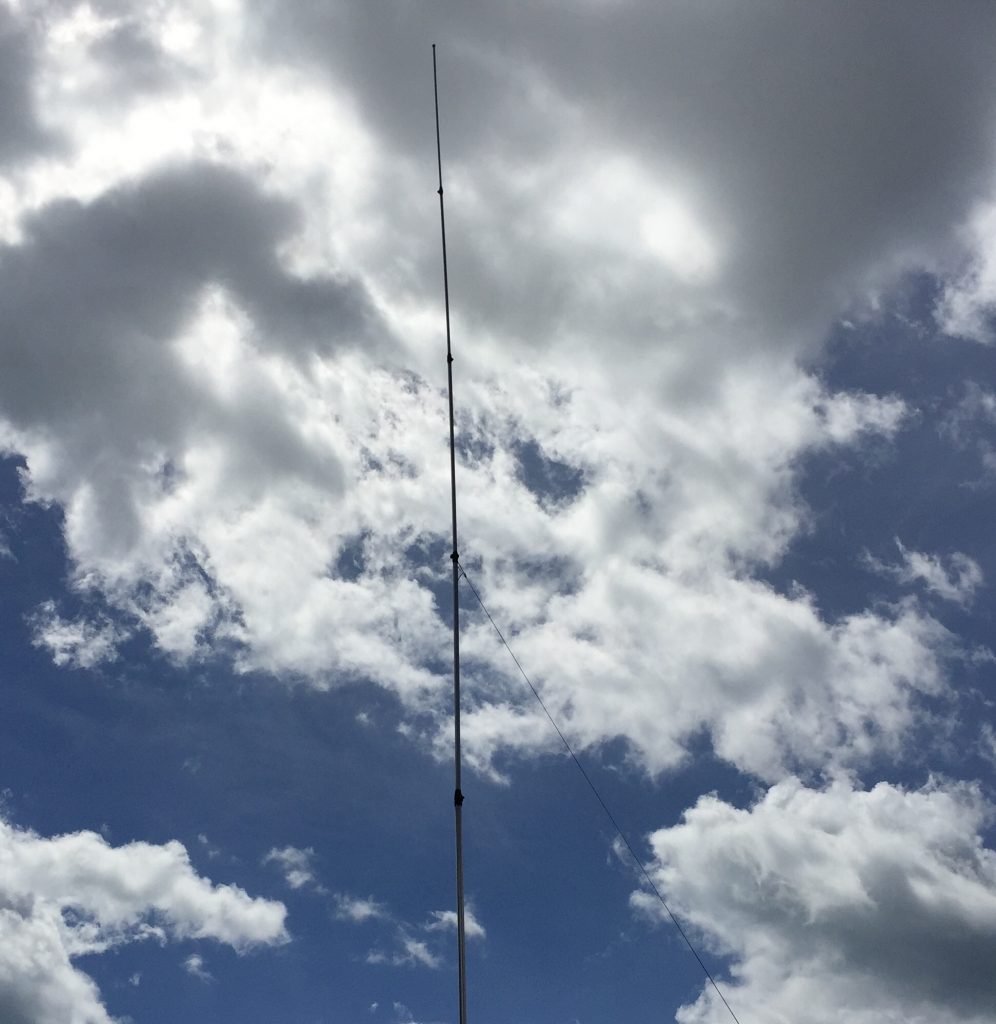A few words:
Sigma Venom vertical:
Ten and twelve metres are great bands. When conditions are favourable, they are the bands you can work the world on with relatively simple aerials. I use a CB aerial, see photo below. It’s a Sigma Venom 5/8 Wave. I’ve adjusted it’s length for the 10 metre amateur band but it can be adjusted to work on the 12 metre band. Notice the nylon string half way up the aerial on the right? That’s the west side of the aerial, where the wind comes from. The string stops the whole thing from bending over in high winds, simple but very effective.
 The base of aerial shown here is only six feet above the ground. It’s mounted on a fence post and yet, with only 100 Watts, I’ve worked Australia and Indonesia. I’ve also worked through many repeaters in Europe and the US.
The base of aerial shown here is only six feet above the ground. It’s mounted on a fence post and yet, with only 100 Watts, I’ve worked Australia and Indonesia. I’ve also worked through many repeaters in Europe and the US.
I now have an Solarcon Antron 99 vertical antenna which I will be testing soon.
Vertical or horizontal:
A horizontal antenna, such as a half-wave dipole or a Yagi antenna, will provide a directional radiation pattern good for communicating with specific stations in a particular direction. This is good for working DX. On the other hand, a vertical antenna, such as a 5/8 wave, will provide an omni-directional radiation pattern that can be useful for communicating with stations located in different directions. This can also be great for local contacts as the antenna will produce a good groundwave. Vertical antennas also tend to have a lower angle of radiation, which can be useful for DX stations. The choice between a vertical or horizontal antenna for the 10 or 12 metre amateur bands depends on the goals of the user.
Working local stations on 10m:
If you wish to work local stations within a few miles of your QTH, you will need to concentrate on groundwave signals. The best type of antenna for this is a vertical. I know that many people have a horizontal half wave dipole outside in the clear or even in the attic. A horizontal dipole is great for DX but not for local contacts as it produces little or no groundwave.
The choice of coax:
Although loss by attenuation is minimal at 28MHz, noise picked up by cheap coax can be a problem. You might find this information about coax interesting. I had used 25 metres of RG8X to feed my 10 metre 5/8 wave vertical. It’s a long run with some loss so I replaced it with RG214. Signals are stronger but, more importantly, the noise level has decreased.
